We were only two hours in, yet Sarah and I had already hustled through the exhibitor floor, meandered in the Playground, created LED-light up clouds in a Makers Space session, and caught half a panel discussion on Competency-Based assessment. Now on the hunt for coffee, my 4th grade teacher companion, sporting a Canvas LMS tattoo sleeve, and Kahoot stickers proclaimed, “Wow, this is so different than any other conference.”
That caught my attention. “How so?” I asked. “We haven’t even really been here that long.” Without hesitation she exclaimed, “Everyone here seems so incredibly happy and optimistic about all of this stuff.” …then put a lid on small to-go cup.
“Hmmm, ok.” I responded. As we headed off to our next thing she abruptly stopped and turned to me. “Are there any teachers here, I mean really? ”
I assured her, “Well, it seems like there are more here than I’ve seen in the past. Do you think there should be more?” She pondered, “I’m not sure.” as we showed up late to a session on Mindfulness. “Actually, Yes. Although a bunch of teachers might bring a bit more reality to the scene than many here are looking for.”

The best way to predict the future is to make it.
The next day we sat and listened to futurist and game designer Jane McGonigal during her keynote, make a case for shaping the future. Five years from its inception, I wondered if SXSW.edu had taken steps to make a future where a teacher felt as if this was an education conference largely not attended by educators, or if in not planning, it had inadvertently become that. However, the “Signals of Change” that Ms. McGonigal alluded to during her address felt present this year. And in a message about understanding trends and projecting where they might potentially take us, there was a sense of collective I hadn’t felt in the past here, where potential solutions to problems should be the work of many, not just a few.
In years past, it seemed that key persons and groups used SXSW.edu as a platform to boldly propose a future where technology (specifically, their technology) would inevitably solve all of education’s problems: Give us enough funding and enough data, and we will match it with enough venture capital bravado and programmers and young MBA’s in a newly opened, hip office in a dilapidated urban neighborhood and create the software to solve education’s problems for you.
In subtle, but real ways…the message seemed to shift this year to: Give us enough understanding of your work, a sense of how you reach kids on a day to day basis through specific strategies and interactions, and we will come to your classrooms, listen to you, pay attention to how and why kids engage and use that to create supportive software to help amplify those approaches to solve problems with you.
In a session titled, What Do We Mean When We Ask if EdTech “Works”?, Chief of Learning Innovation at LEAP Innovations, Chris Liang-Vergara, summarized his team’s research report Finding What Works with this (as interpreted on a half cup of mediocre coffee after a very late night – all apologies Chris):
When people ask, “What are the qualities of a good digital learning tool?” we want to resist the urge to place the promise of measurable learning gains on the tools alone. The tool is such a small percent of the formula in relation to the skill of the instructor. Instead, we tend to look for tools that support innovative pedagogical practice, provide a learner focused approach, and enable the type of learner agency that the teachers are already looking for and fostering in their classrooms….where teachers don’t have these core expectations nor are implementing strategies that support student inquiry and access to diverse resources and differentiated
demonstration of knowledge, the tools provide little help to change the outcomes of those classrooms.
Having spent the better part of the last 7 years watching educational software development largely focus on processes that take place at the perimeter of the teaching and learning cycle, it was refreshing to hear and see groups begin to circle back to the important instructional authoring and delivery pieces that truly inform best practice and inevitably have the most promise in supporting learning gains.
So as part of a team that showed up to illuminate our recent work with our colleagues from the Smithsonian on their new Learning Lab, we definitely felt like we were a part of that message and were thrilled with the numbers that turned out for our presentation and later for our social mixer in downtown Austin. It felt right sharing how much time we spent in classrooms, and how much of our system could be cited back to a specific teacher’s needs or a given group of 6th graders trying to accomplish a complex learning activity with one of our many prototypes. I was happy to see two of the teachers in the crowd who had been part of our testing team across 3 years of research and development and to know that our lead researcher, programmer, educator-specialist, and project director knew them personally.
The questions we received during our presentation and the conversations at our follow-up event were pointed, vibrant, and clear. Afterwards, we invited an eclectic group to come meet the Smithsonian team that included this small band of teachers interspersed with industry leads from t’es, Nova, SETDA , U.S. OET, National Film Board of Canada, the Annenberg Learner Foundation and NYLearns, amongst many others. (Thank you all for your attendance and support.) There was a general desire to see the ways in which teachers had played an active role in the organizing of open educational resources while applying of their own instructional cohesion as part of the process. The Smithsonian Learning Lab was received well, and many wanted to know what kinds of inputs, efforts, and culture supported its development and ongoing implementation. Good people intermingled with good drinks and food in a music filled environment where ideas could take form over handshakes, laughing, and genuine collegiality.
At one point I stumbled into a conversation amongst educators about what makes for a great teacher, and because we had asked people to remove their SXSW badges (and thus titles and affiliations) at the door in order to have people meet merely as people, I was surprised to to find out later that the conversation actually involved a software CEO, a lead actor/educator from the Royal Shakespeare Company, a middle school History teacher from Utah, and an Ed Tech Incubator from Tokyo. That evening was the culmination of one of the better experiences I’ve had at a conference in the last few years, and not one I would have suspected could have occurred at the SXSW.edu events of the past.
Perhaps this conference really is growing into an educator affair? Perhaps we bring more teachers next time? I thought to just ask Sarah since she was sitting next to me on our long flight back home.
Under the beam of the small personal overhead spotlight she had turned
on, I saw that she was scrolling through 3 days of emails from her teaching partner, scores of parents, administrative site announcements, fund-raiser events, etc. “Over 120 in all.” she tells me. She was working to select those that need immediate answers and those that can wait a day or two. So instead, I offered to start developing the slide show she’s required by her administrator to present to her faculty from my laptop while she openly cites from 3 days of notes. “That would be really helpful.” she replied with a sigh that I assume comes with connecting back to the reality of a teaching life waiting at home…”at least I got my grades in before I left.”
“So what do you want to share with your colleagues?” I asked, opening my laptop. She fished out her notes while I started a new Google Slide presentation, and typed What Sarah Learned @ SXSW.Edu.
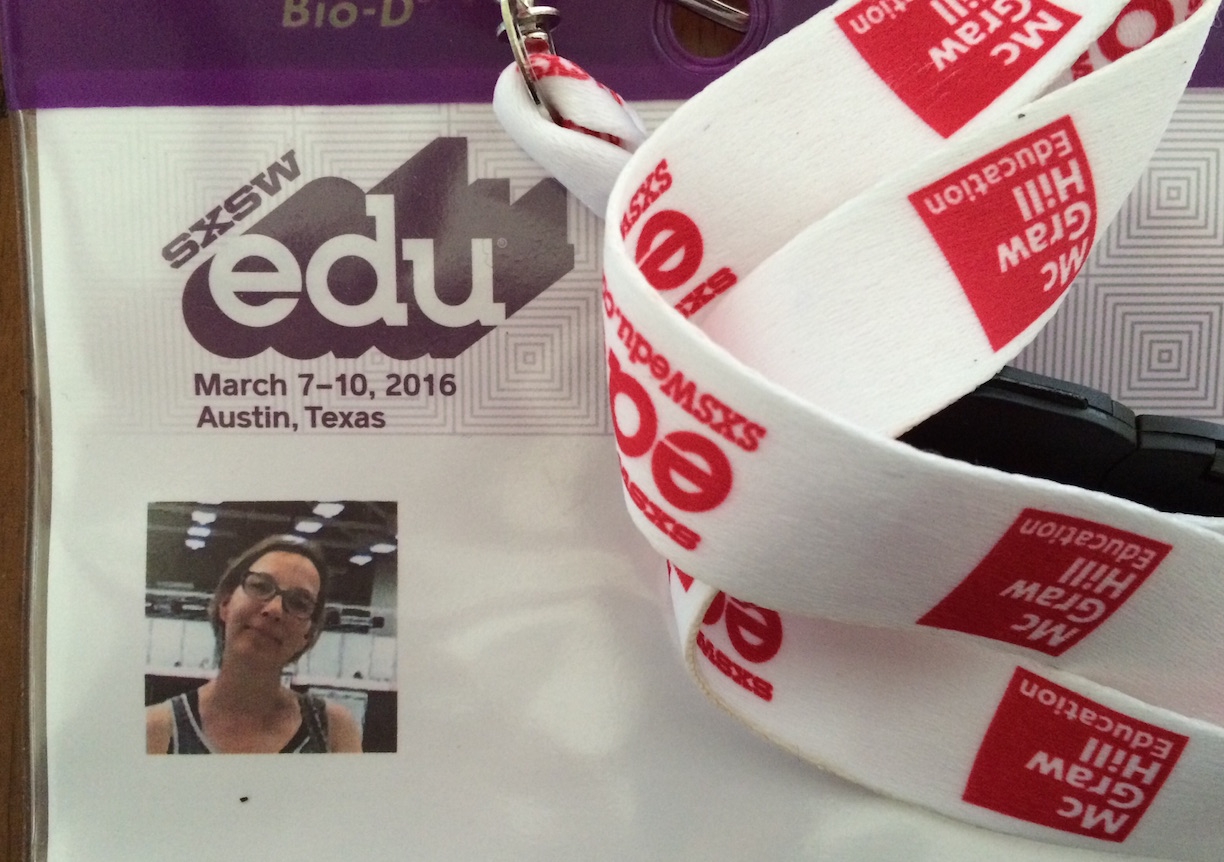
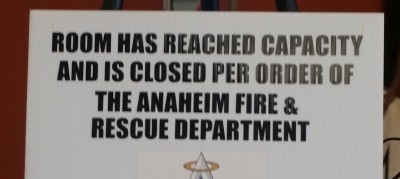








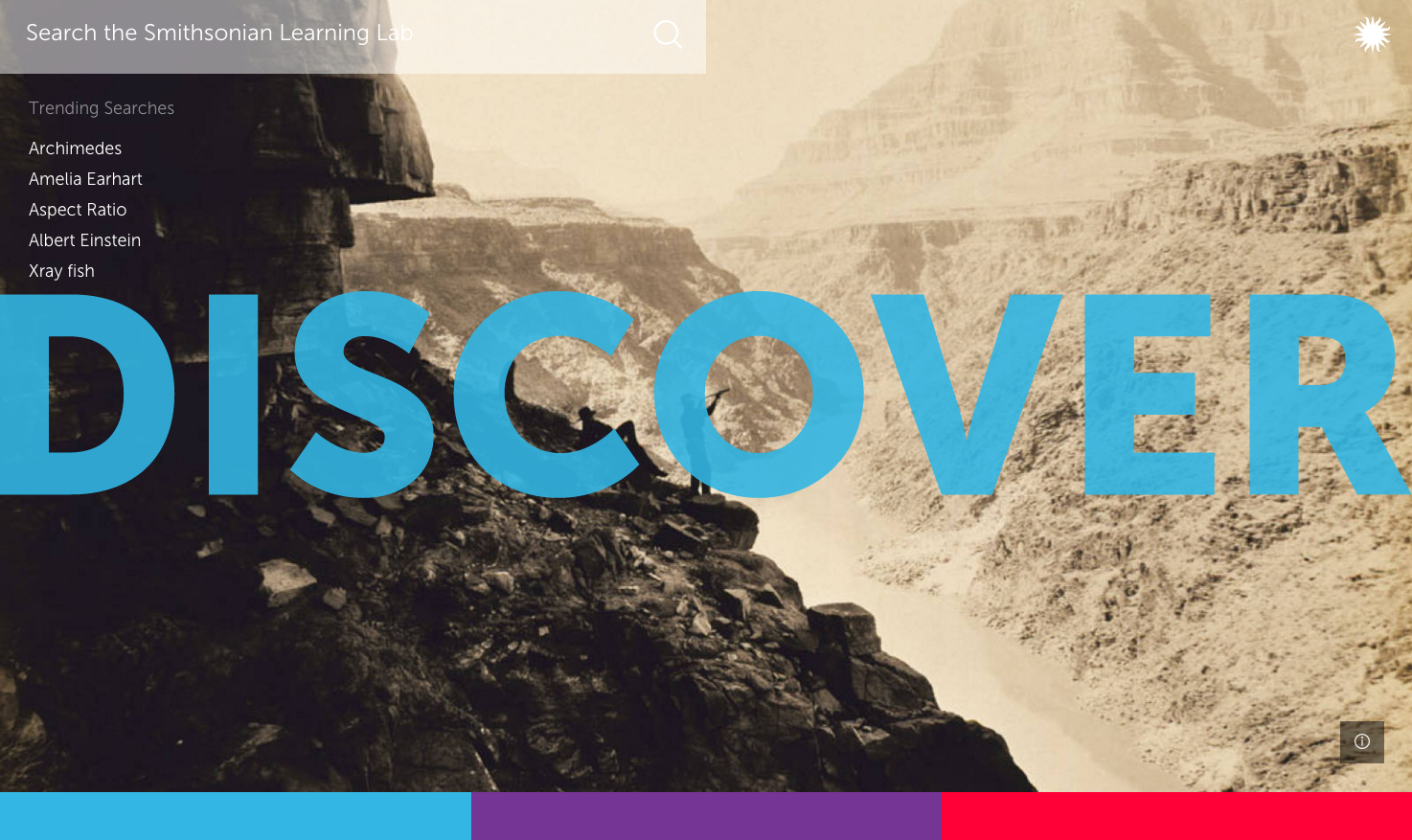



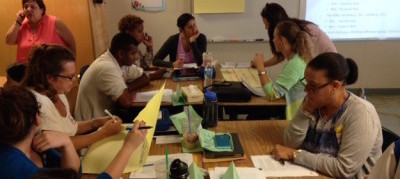

 & Jodi Halligan
& Jodi Halligan 
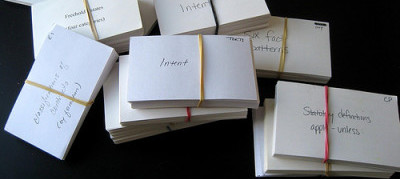
 son who is a Freshman. For the record, these are respectively kids # 4 & 5 that I am personally getting to usher through their last stop in the public education system. They both have Spanish I this year, but with two different teachers. In our Junior’s Spanish class, he came home the first week and said, “I have to create an account on
son who is a Freshman. For the record, these are respectively kids # 4 & 5 that I am personally getting to usher through their last stop in the public education system. They both have Spanish I this year, but with two different teachers. In our Junior’s Spanish class, he came home the first week and said, “I have to create an account on 
 other educator’s methods and share their own. But across hundreds and hundreds of experiences spanning 15 years, I can count on one hand the number of times a high school team collectively engaged any one of these types of deep assessments of their own craft and culture. I have only seen a few sites that have realistically moved their school into a position to make any kind of unified claims about the nature of their coursework and their instructional approaches.
other educator’s methods and share their own. But across hundreds and hundreds of experiences spanning 15 years, I can count on one hand the number of times a high school team collectively engaged any one of these types of deep assessments of their own craft and culture. I have only seen a few sites that have realistically moved their school into a position to make any kind of unified claims about the nature of their coursework and their instructional approaches.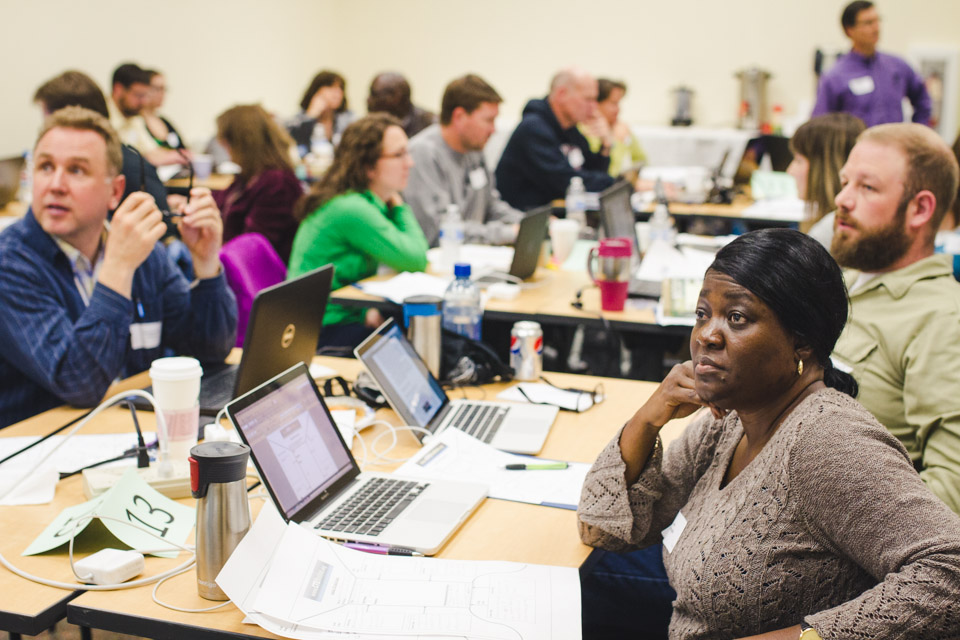





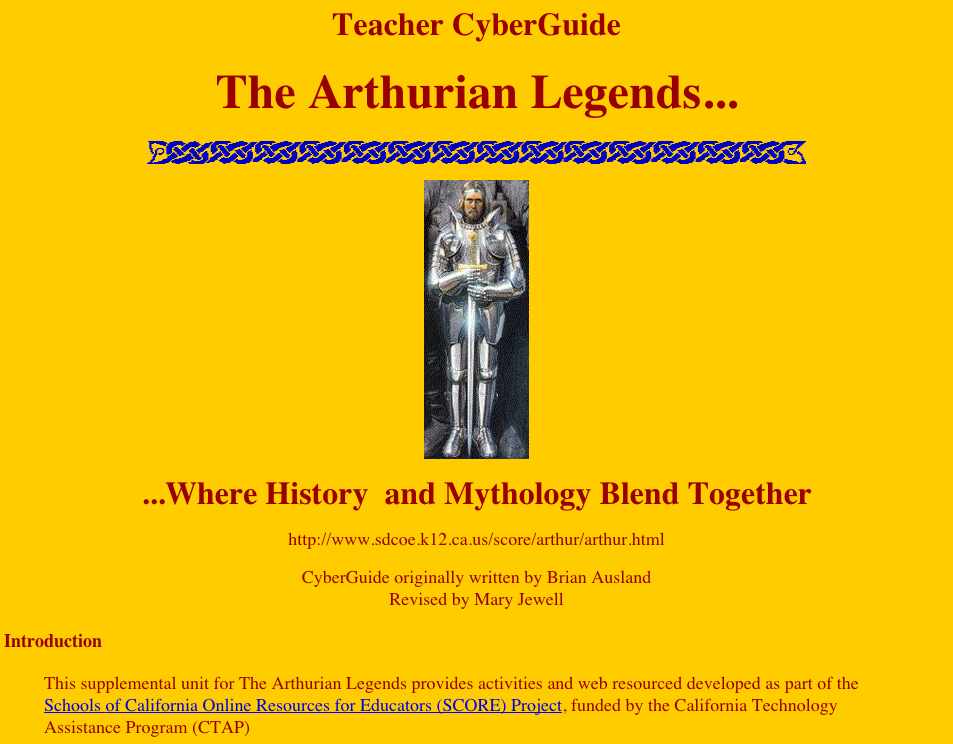
 disaggregating, defining, and typically ranking or relationally justifying those pieces.
disaggregating, defining, and typically ranking or relationally justifying those pieces. amounts of their time teaching and reflecting on how to mix up the best learning concoctions through repeated trial and error as an average educator does hundreds of times a week. So people, teams, agencies, and companies unwittingly focus on tackling more tangible items like helping teachers find resources, save them, drop them into a display view,and solicit some direct student reflection about the items or respond to a simple-structure question. And yes, powerful learning can be aided by a well-developed and timely resource, but rarely do resources independently instigate and support a sustained learning experience that moves the learner through a series of inter-related cognitive cycles requisite to deep learning and connection with the content.
amounts of their time teaching and reflecting on how to mix up the best learning concoctions through repeated trial and error as an average educator does hundreds of times a week. So people, teams, agencies, and companies unwittingly focus on tackling more tangible items like helping teachers find resources, save them, drop them into a display view,and solicit some direct student reflection about the items or respond to a simple-structure question. And yes, powerful learning can be aided by a well-developed and timely resource, but rarely do resources independently instigate and support a sustained learning experience that moves the learner through a series of inter-related cognitive cycles requisite to deep learning and connection with the content. WYSIWYG editor tool bar and are not rendered as a playlist of slides.
WYSIWYG editor tool bar and are not rendered as a playlist of slides. 
 So whether the curricular item is referred to as a web-based project, an online lesson plan, or a digital learning resource, our imagination makes anticipatory leaps envisioning the promised innovation. However, I am always burdened by my own history in this space. In 1995 I started teaching. Because of some of my “home-grown” online curriculum at the time, I was invited to be part of a statewide project in California that brought 100 teachers together to learn FrontPage and Composer to make online versions of our best units to publish on the World Wide Web. Sharing ideas and coming up with imaginative projects and activities with other teachers was awesome, but taking those ideas and making them then conform to the old Bernie Dodge
So whether the curricular item is referred to as a web-based project, an online lesson plan, or a digital learning resource, our imagination makes anticipatory leaps envisioning the promised innovation. However, I am always burdened by my own history in this space. In 1995 I started teaching. Because of some of my “home-grown” online curriculum at the time, I was invited to be part of a statewide project in California that brought 100 teachers together to learn FrontPage and Composer to make online versions of our best units to publish on the World Wide Web. Sharing ideas and coming up with imaginative projects and activities with other teachers was awesome, but taking those ideas and making them then conform to the old Bernie Dodge  However, more times than not, I am directed to a list of PDF’s or videos. Instead of being mesmerized and drawn in by rich resources, thoughtfully organized by skilled educators, I find myself looking at none of those items listed out above, let alone a combination of many of them. And the real tragedy is in the amount of time and effort that goes into bringing together teachers, having them consider and articulate their practice and instructional approaches full of dynamic and fluid ideas and strategies, we end up modeling up very traditional, unimaginative, one dimensional frameworks. Rather than work to innovative the use of the very digital environment in which these derivative, digital learning objects are stored, the resulting content is most often published in simple digital document formats or single-perspective, lecture-based videos. The platforms themselves are often elaborate, the communication tools are robust, the group utilities are feature-rich, the overall design is thoughtful and responsive, but when you get to the OER objects, we end up browsing through tired collections of PDFs, embedded Crocodoc files, passive html pages, or simple play-lists of materials where teachers might have not even developed much of the material, but instead were merely asked to assess it’s instructional value, subject-focus, and standards alignment. The curriculum or key learning assets make little to no use of the rich, digital, database supported environments in which they are hosted. So while it seems that programs often afford their web site and auxiliary functions and marketing content far more UI and UX considerations, the actual instructional artifacts the program is designed to solicit, build, develop and deploy get stuck with antiquated design models. After all the work that goes into these types of programs, and we know the work well, this should be the easiest part to get right…right?
However, more times than not, I am directed to a list of PDF’s or videos. Instead of being mesmerized and drawn in by rich resources, thoughtfully organized by skilled educators, I find myself looking at none of those items listed out above, let alone a combination of many of them. And the real tragedy is in the amount of time and effort that goes into bringing together teachers, having them consider and articulate their practice and instructional approaches full of dynamic and fluid ideas and strategies, we end up modeling up very traditional, unimaginative, one dimensional frameworks. Rather than work to innovative the use of the very digital environment in which these derivative, digital learning objects are stored, the resulting content is most often published in simple digital document formats or single-perspective, lecture-based videos. The platforms themselves are often elaborate, the communication tools are robust, the group utilities are feature-rich, the overall design is thoughtful and responsive, but when you get to the OER objects, we end up browsing through tired collections of PDFs, embedded Crocodoc files, passive html pages, or simple play-lists of materials where teachers might have not even developed much of the material, but instead were merely asked to assess it’s instructional value, subject-focus, and standards alignment. The curriculum or key learning assets make little to no use of the rich, digital, database supported environments in which they are hosted. So while it seems that programs often afford their web site and auxiliary functions and marketing content far more UI and UX considerations, the actual instructional artifacts the program is designed to solicit, build, develop and deploy get stuck with antiquated design models. After all the work that goes into these types of programs, and we know the work well, this should be the easiest part to get right…right?



 increased ability to use, navigate, research, and demonstrate learning gains. We believe some of this is attributable to implementing tools that better provide a given teacher a clear method to replicate and communicate their instructional decisions and scaffolding in a unified way along with the sequenced learning objects/resources they’ve selected. In and of themselves, playlists of objects, videos, and quizzes aren’t structured to perform in this way and don’t provide enough spacing for subtle, but key cognitive reflection points nor room for learner differentiation based on those “formative forks” that occur when a good teacher is guiding students. More testing is occurring now, and the data is supporting our inclinations. We are excited to be moving the conversation and the focus of back to the learning process itself, and ultimately welcome more projects, programs, agencies, and firms to do the same. We are not trying to abandon paying homage to traditional curricular formatting which is designed to document and record static instructional models. We are merely more interested in creating new models that are designed to capture and publish fluid, organic, strong learning exchanges crafted by practitioners each and every day in classrooms across the nation. Platforms that are making resulting student data more readily accessible and usable for teachers, that are presenting diverse ways for colleagues to coordinate and communicate, and are enabling up-stream agencies to track and monitor assessment data across large systems for strategic long-term decision making are all good things, but only when they are also paying attention to the heart of the matter.
increased ability to use, navigate, research, and demonstrate learning gains. We believe some of this is attributable to implementing tools that better provide a given teacher a clear method to replicate and communicate their instructional decisions and scaffolding in a unified way along with the sequenced learning objects/resources they’ve selected. In and of themselves, playlists of objects, videos, and quizzes aren’t structured to perform in this way and don’t provide enough spacing for subtle, but key cognitive reflection points nor room for learner differentiation based on those “formative forks” that occur when a good teacher is guiding students. More testing is occurring now, and the data is supporting our inclinations. We are excited to be moving the conversation and the focus of back to the learning process itself, and ultimately welcome more projects, programs, agencies, and firms to do the same. We are not trying to abandon paying homage to traditional curricular formatting which is designed to document and record static instructional models. We are merely more interested in creating new models that are designed to capture and publish fluid, organic, strong learning exchanges crafted by practitioners each and every day in classrooms across the nation. Platforms that are making resulting student data more readily accessible and usable for teachers, that are presenting diverse ways for colleagues to coordinate and communicate, and are enabling up-stream agencies to track and monitor assessment data across large systems for strategic long-term decision making are all good things, but only when they are also paying attention to the heart of the matter.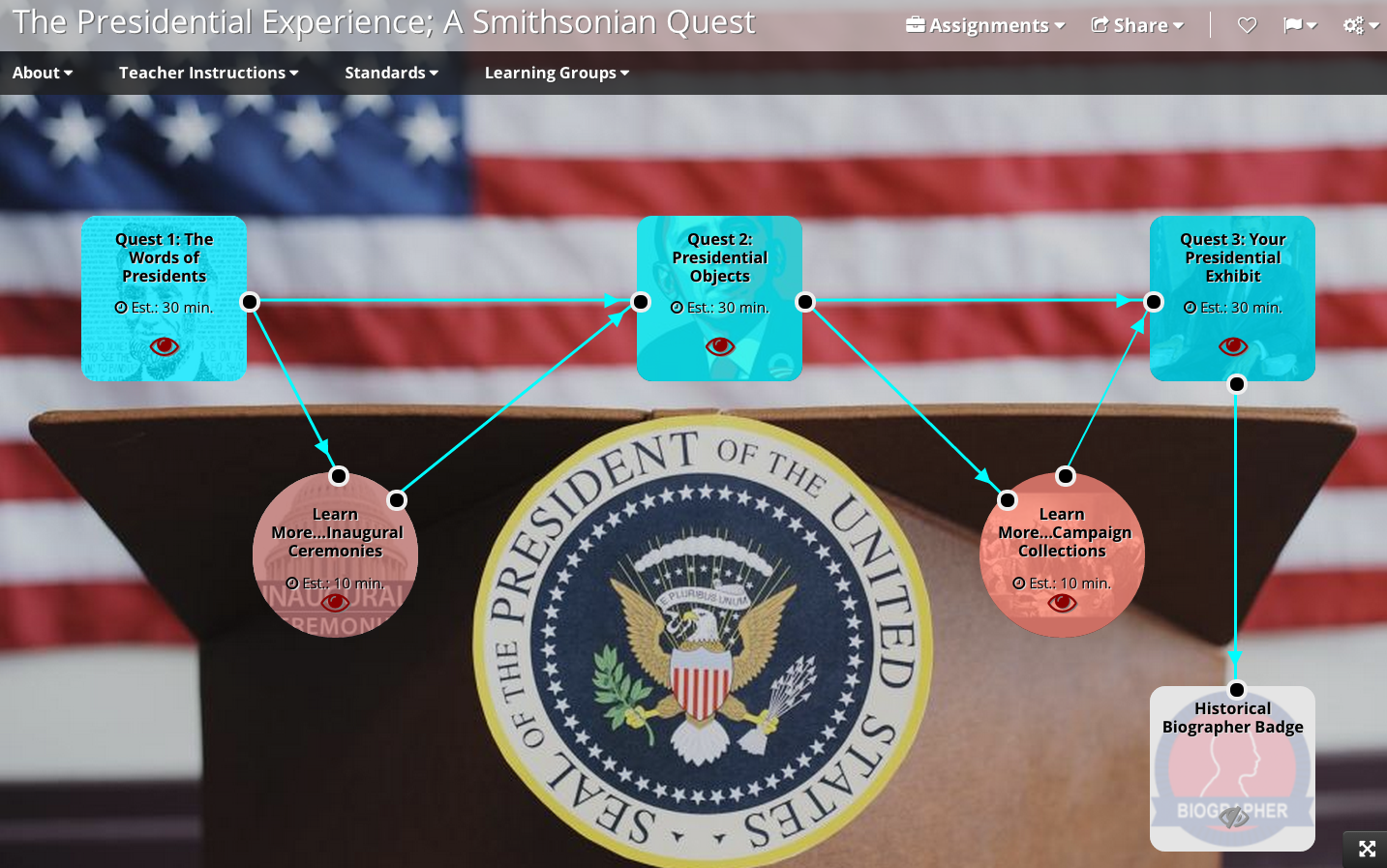

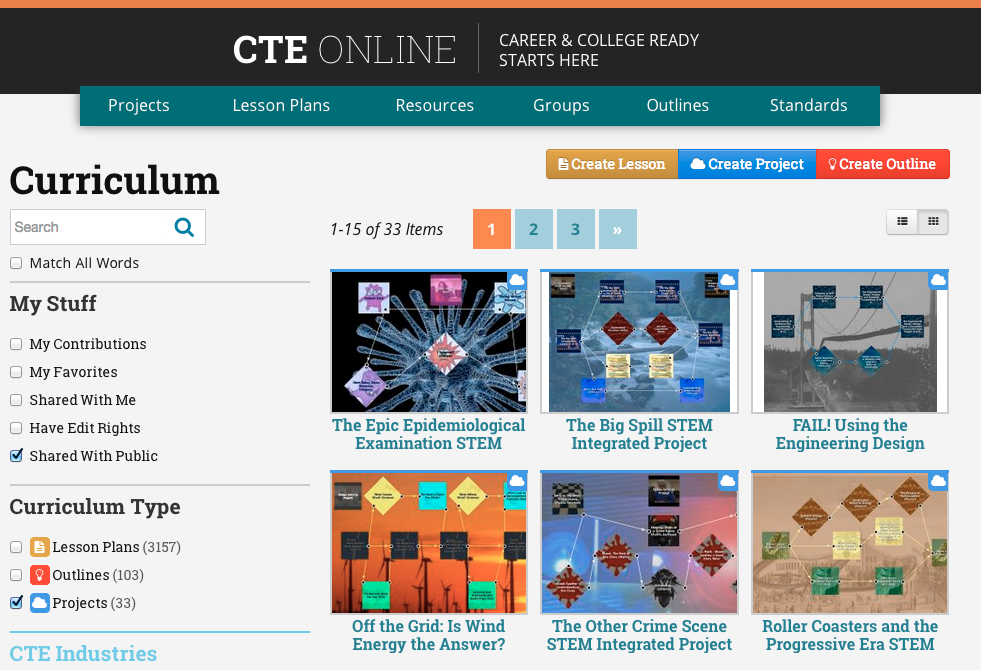
 of teacher-teams from across the state of California in Sacramento. All the pieces are familiar, tables with laptops, notes, materials, hovering instructional leads (all current or former classroom teachers by design), and the CTE Online site up on the screen. While I don’t see it, I am certain there is coffee and danishes and fruit in the back of the room, and with any luck, a variety of flavored creamers. (which always seemed like one of the most difficult and absurd things to secure given all of the other technical moving pieces to this puzzle)
of teacher-teams from across the state of California in Sacramento. All the pieces are familiar, tables with laptops, notes, materials, hovering instructional leads (all current or former classroom teachers by design), and the CTE Online site up on the screen. While I don’t see it, I am certain there is coffee and danishes and fruit in the back of the room, and with any luck, a variety of flavored creamers. (which always seemed like one of the most difficult and absurd things to secure given all of the other technical moving pieces to this puzzle) In 2005 we dared to consider using an online lesson authoring tool integrated with high-end digital resources and then state academic and CTE standards to allow these great teachers to create and share the detail of their best lessons and projects. The first pilot we performed was in Chico CA and involved about 25 educators working independent of one another, all autonomous in their disciplines ranging from Auto Teachers and Early Childhood Educators to Culinary Teachers and Engineering/Architecture Instructors. They each created what they considered to be their 4 best lessons in the online environment and were guided by the tool and a small team of me and two technical support staff. Once we published those 100 or so lessons to CTE Online, the site’s access immediately grew from an average of 10-20 visits a day to 200 in the first 3 weeks. Over the years we expanded the program to include institutes all over the state, and involved up to 145 teachers in a given year. We also started soliciting teams of teachers from academies and programs where academic core staff and CTE/STEM staff worked together to create project-based units of multiple lessons. We paid the teachers for their curriculum, we treated them like professionals, we selected some of them to serve as specialists and instructional leads to support future teams and groups in our program. We did dinners together, and convened in hotel rooms to work through ideas late into the night. We made lots of friends amongst these teachers many of whom I call on and connect with regularly to this day. (below, growth of users per month on CTE Online from 2010-2014)
In 2005 we dared to consider using an online lesson authoring tool integrated with high-end digital resources and then state academic and CTE standards to allow these great teachers to create and share the detail of their best lessons and projects. The first pilot we performed was in Chico CA and involved about 25 educators working independent of one another, all autonomous in their disciplines ranging from Auto Teachers and Early Childhood Educators to Culinary Teachers and Engineering/Architecture Instructors. They each created what they considered to be their 4 best lessons in the online environment and were guided by the tool and a small team of me and two technical support staff. Once we published those 100 or so lessons to CTE Online, the site’s access immediately grew from an average of 10-20 visits a day to 200 in the first 3 weeks. Over the years we expanded the program to include institutes all over the state, and involved up to 145 teachers in a given year. We also started soliciting teams of teachers from academies and programs where academic core staff and CTE/STEM staff worked together to create project-based units of multiple lessons. We paid the teachers for their curriculum, we treated them like professionals, we selected some of them to serve as specialists and instructional leads to support future teams and groups in our program. We did dinners together, and convened in hotel rooms to work through ideas late into the night. We made lots of friends amongst these teachers many of whom I call on and connect with regularly to this day. (below, growth of users per month on CTE Online from 2010-2014)
 However, along the line we did find those few leaders at the state department, and amongst local agencies that saw our approach and our data for what it was worth. They waded into the bureaucratic tangle we caused and pushed beyond the rhetoric to lend us support and shield us when the barrage became the heaviest. They have the scars to show for it. I thank them for that, and the teachers who were brave enough to bare their curricular thinking and planning and trusting us to not critique or judge but instead to ask questions, guide, coach and always collaborate in bringing out their excellence and allowing us to help tell the story of their effectiveness and commitment to students. (See
However, along the line we did find those few leaders at the state department, and amongst local agencies that saw our approach and our data for what it was worth. They waded into the bureaucratic tangle we caused and pushed beyond the rhetoric to lend us support and shield us when the barrage became the heaviest. They have the scars to show for it. I thank them for that, and the teachers who were brave enough to bare their curricular thinking and planning and trusting us to not critique or judge but instead to ask questions, guide, coach and always collaborate in bringing out their excellence and allowing us to help tell the story of their effectiveness and commitment to students. (See